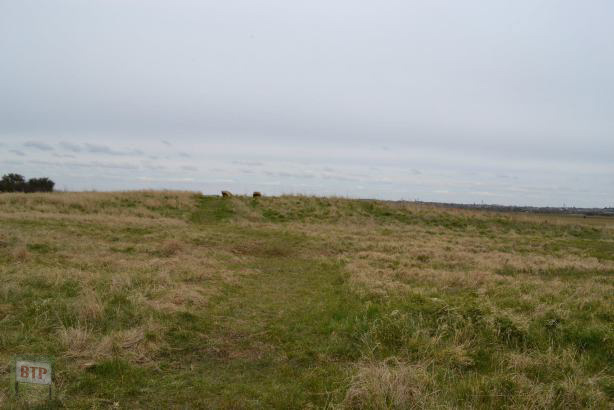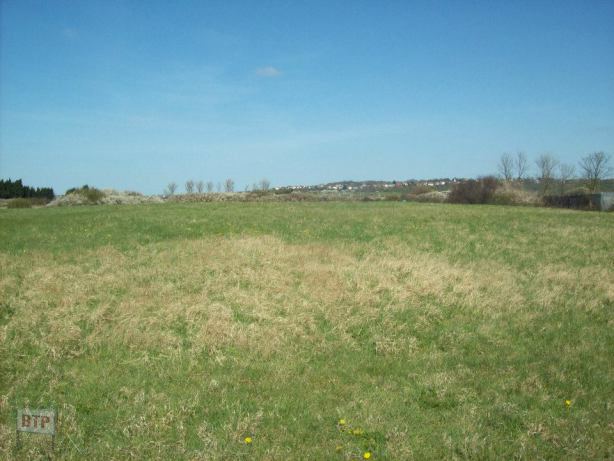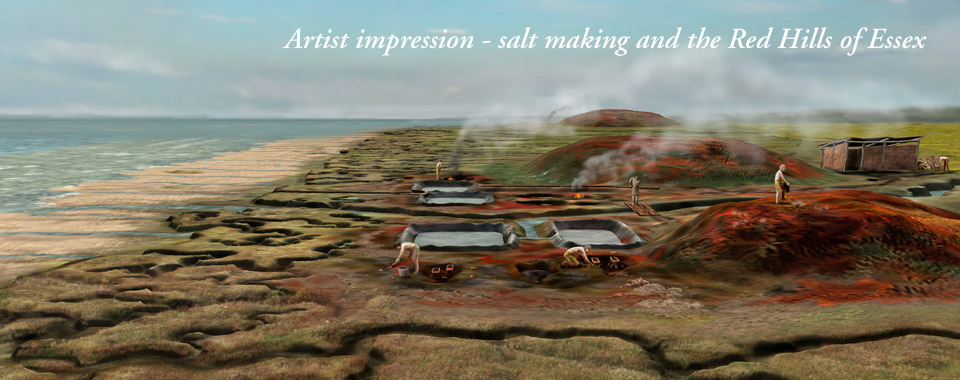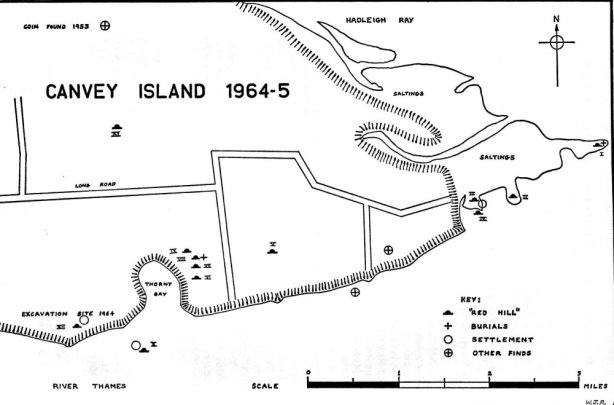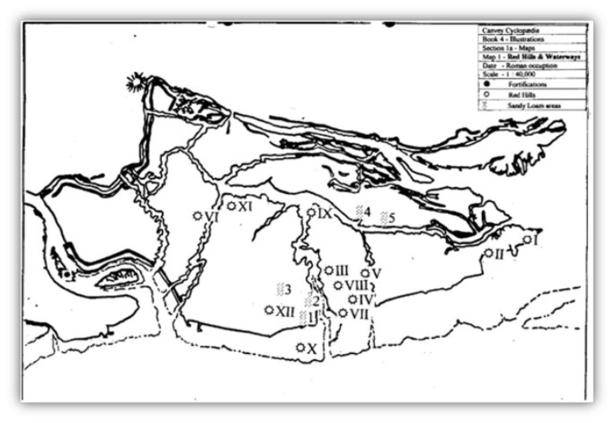(Left) Replica red hill created at RSPB Bower’s Marsh nature reserve, Canvey Island. (Right) An actual site of a Red Hill. A faint hill remains between Waterside Sports Centre and Cornelius Vermuyden Secondary School (unclear if this is due to Red Hill works). (Bottom) Artists impression
Before Dutchman Cornelius Vermuyden reclaimed Canvey from the sea in the 17th Century, the Island was no more than an area salt marsh. Like many other places across Essex, such as Moldon and Mersea, salt-gathering was a prime industry here during the Neolithic (‘cavemen’)Era , foremost the Roman Era, and even up into the Middle Ages. Red Hills were earthworks created from scraps of old pottery and clay used to evaporate the salt. Red Hills were used as furnaces to evaporate the salt from the water first collected in lagoons dug in the marsh. The heated soil and pottery gave these mounds their distinctive red colour, hence their name.
(Left) 1960s map showing the red hill sites across east Canvey (courtesy of Warwick J. Rodwell). (Right) Simple map of the entirety of Canvey showing the red hills and other Roman sites, Dowd’s Canvey Cyclopedia.
This entry was posted in Location Report
